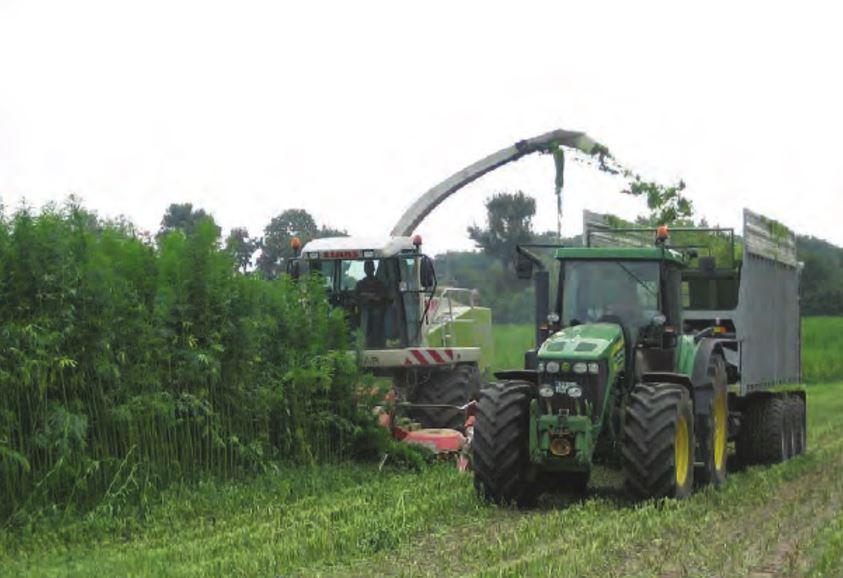Industrial Hemp Making Strides as an Emerging ‘New’ Crop
Industrial Hemp, historically somewhat misunderstood by the general public, is making strides in being recognized for what it is… a crop completely different than its related strain which is still classified as a narcotic.
Hemp is a form of Cannabis sativa L., is still classified as a Schedule I drug under the Controlled Substances Act in the U.S. This past July, legislators introduced the Industrial Hemp Farming Act of 2017, authored across party lines and seeks to remove Hemp from that classification. This one step could have far-reaching ramifications for the advancement of this commodity group not only in the US but worldwide.
It has widespread support for approval; which would remove many barriers to furthering Hemp’s rightful place as a sustainable crop that delivers many products and uses in the future for agriculture and consumers.
While individual states continue to approve the medicinal and recreational use of Marijuana; public acceptance grows…what many miss, however, is that Hemp, other than its genus, is completely different. It has no psychedelic effects on the user and holds the definition of containing less than 0.3% THC (tetrahydrocannabinol).
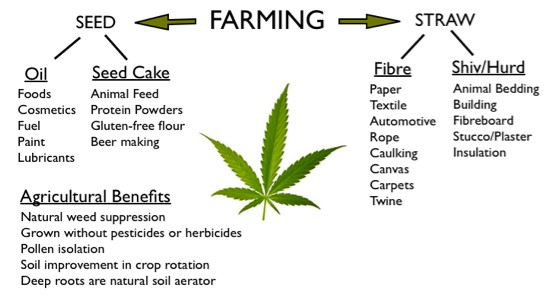
This graphic illustrates the many uses and benefits Hemp offers as a crop in rotation. Source: Hemp Technologies Collective
There are many uses and products that can be extracted from a hemp plant and its various parts. Virtually every part of the plant can be processed and sold into a viable use.
Growing hemp is not difficult as a rule. It has very few insect and/or disease pests at this point in its evolution (though this may change as more acres are grown), and it is a very active growing crop, so there is virtually no need for herbicides in the pest management of the crop. It responds well to nitrogen, so where growers have developed rotations around hemp, they’ll typically have it follow a legume like soybeans, lentil, and other annual legumes; then follow the hemp with a small grain or cereal crop. Its soil conditioning value while actively growing, due to its root systems, actually returns quite a bit of organic nitrogen to the soil; making it a great fit for the cash crop farm.
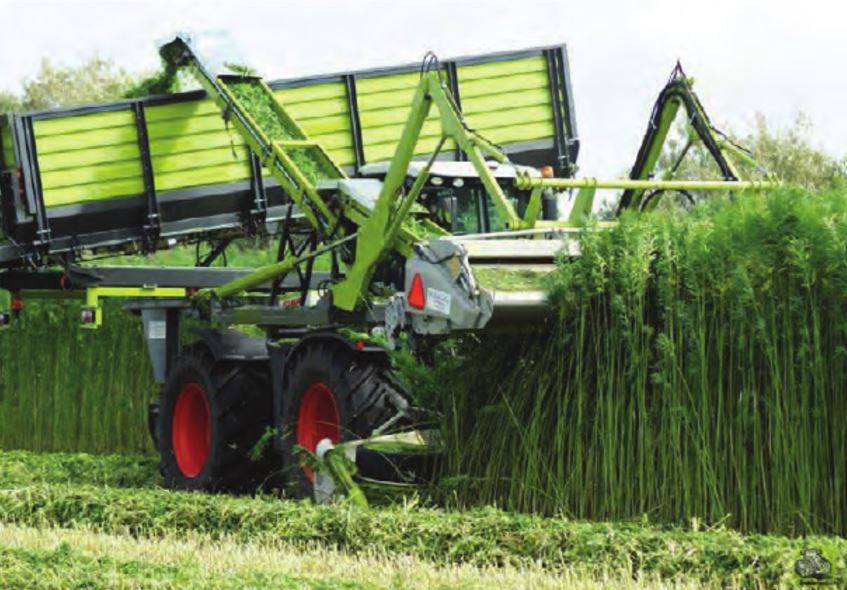
Industrial Hemp Transformation for Composite Applications: Influence of Processing Parameters on the Fibre Properties (Claas Xerion with hemp stripper. Photo: A. Dun)
The Audacious Claims – over recent years, many groups and interests have boasted big profits and gross returns per acre for hemp. Many of these claims are in fact, greatly inflated. The biggest challenge behind advancing the hemp industry around the world is two-fold; and revolves entirely around infrastructure.
1.) Proven Varieties – like other grain and field crops, the acceleration of adoption is greatly enhanced by the plant breeder. At present, there are very few Certified varieties of hemp..there are even very few states or entities that even have Certification Bodies that can adhere to what is necessary for third-party verification. Colorado is a leading state in the evolution of proving varieties in the US; but even there, the process is slow to evolve. Canada is far more advanced than the US and the agricultural industry in the US, as well as processors who are converting hemp seed to oil and other products; are looking north to learn more about how to make this crop work in the US.
2.) Processing – the inflated value estimates of hemp being claimed by various groups are not inaccurate, but they can be misleading to the farmer. Farmers are accustomed to growing a crop, harvesting, drying, cleaning, and selling it to the next step. A mature grain industry, say, like, canola; has a strong network of processors able to handle huge volumes of the crop when it arrives in accordance with their specifications relating to quality. Hemp is and will be no different. Certain strains have better oil content, or better fiber content, or are of a higher or lower test weight, etc … management in the field can also affect all these parameters. Add in that the crop must test below THC legal thresholds, and the challenge increases.
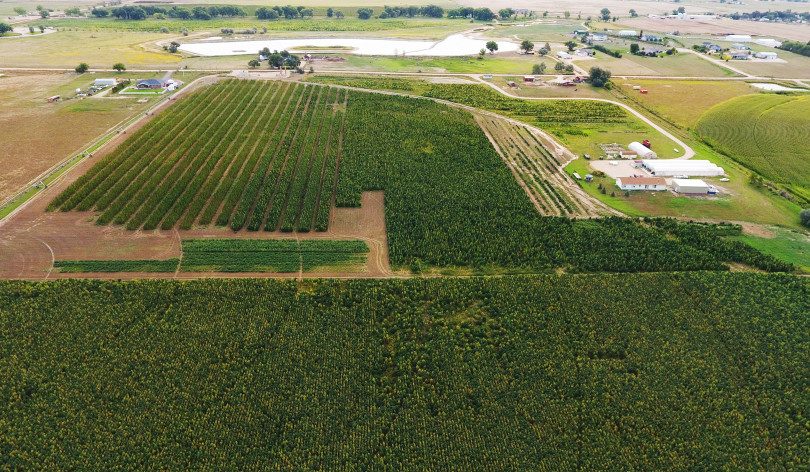
EATON, CO – SEPTEMBER 5: Colorado Cultivars Hemp Farm is one of the largest hemp farms in the U.S. on September 5, 2017, in Eaton, Colorado. (Photo by RJ Sangosti/The Denver Post)
Growers are learning that they can learn how to select and grow outstanding crops of Hemp, but have no market because of their location, and the lack of infrastructure to find them. Look for growers to take charge of this step if the industry doesn’t address the supply. Like other successful agricultural industries, growers will come together and do it themselves in the form of cooperatives or corporations owned by the farmer.
While most of the industrial hemp being grown in the US and elsewhere has been dominated by small acreage holdings, this can and will end up like its other grain industries and become an economics of scale question. The ease of growing, the development of emerging, more efficient machines to harvest and separate the parts of the crop, and other factors will have many large grain producers producing the majority of the hemp products on the market.
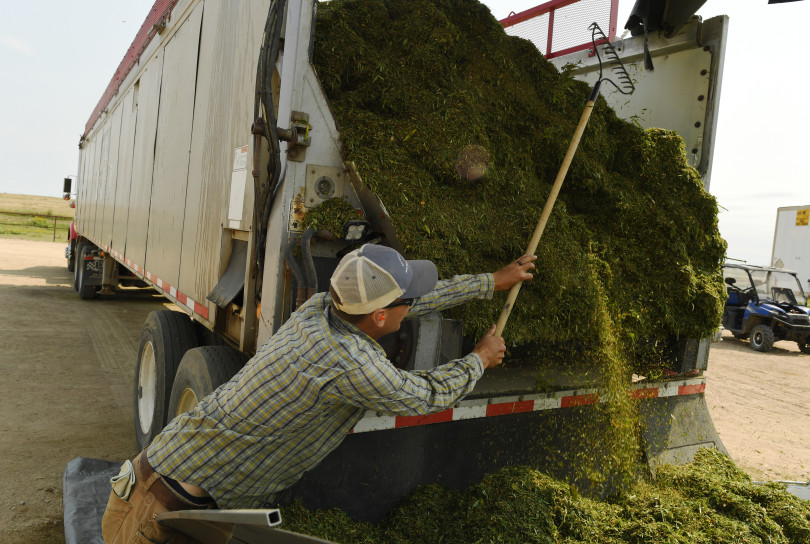
EATON, CO – SEPTEMBER 5: Robin Pitt, of Colorado Cultivars Hemp Farm, unloads a load of hemp after it was harvested on September 5, 2017, in Eaton, Colorado. (Photo by RJ Sangosti/The Denver Post)
Read more about it:
The Hemp Technologies Collective
YouTube Videos – Kentucky Tobacco turning to Hemp (plus other videos)
The Industrial Hemp Farming Act is back — is this the year Congress legalizes the crop? (The Cannabist)
The Denver Post – Going into its fourth harvest, industrial hemp industry still facing growing pains
State Hemp Statutes – National Conference on State Legislatures
Why Legalized Hemp Will Not Be a Miracle Crop – Modern Farmer


